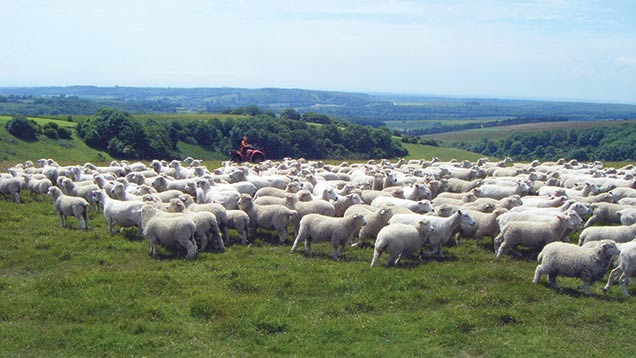6 top tips for running a low-input sheep system
 ©Alexandra Joseph
©Alexandra Joseph UK farmers often look to New Zealand for answers on running a low-cost, efficient sheep system.
Here are some Kiwi top tips for running a streamlined enterprise.
See also: Cornish sheep farmer undergoes New Zealand style revamp
1. Key to success is lambing on to an adequate grass supply.
2. Use a breed that suits your environment with good constitution, structural soundness and productive traits.
3. Females
- Set targets for scanning percentage, lambing percentage and lamb weaning weights.
- If you haven’t met targets, do not feed trade stock at the expense of breeding stock – this is a false economy.
- Pre-lambing shearing can prevent casts and encourage shelter-seeking.
- Select for twins, unassisted lambing and vigorous newborns with good survival.
- Only keep good mothers that select a protected lambing site, know how many lambs are theirs and will not leave their lambs when you’re tagging.
- Don’t breed from ewes that have let you down.
- Successful mating of ewe hoggets is the best indicator of early maturity and genuine fast growth.
- High growth and muscularity are male traits; retain only pregnant hoggets to achieve a maternal balance.
- Any ewes requiring assistance at lambing, or that didn’t rear lambs, should be moved to a B flock and mated to a terminal sire.
4. Rams
- Only use performance-recorded rams from breeders who are selecting for low-input sheep.
- Buy rams that have been farmed under commercial conditions.
- Choose high-vigour, high-capacity rams (1:100 ewes) with a top dam history.
5. Apply selection pressure to the whole flock to highlight underperformers – keep plenty, cull hard.
6. Get body condition score right and avoid high fluctuation in bodyweight as much as possible.
Source: Wairere NZ Romneys
